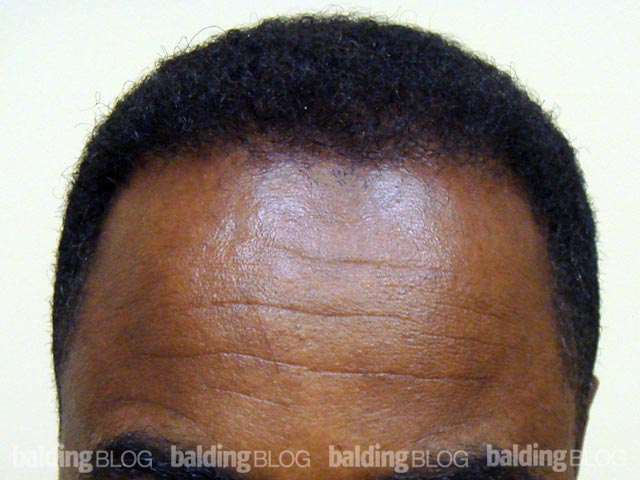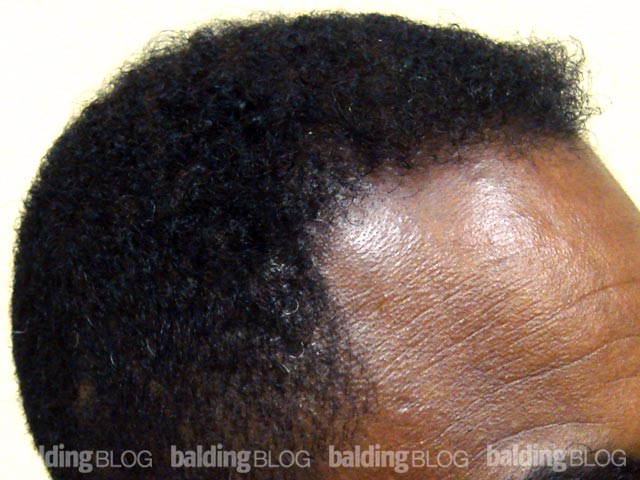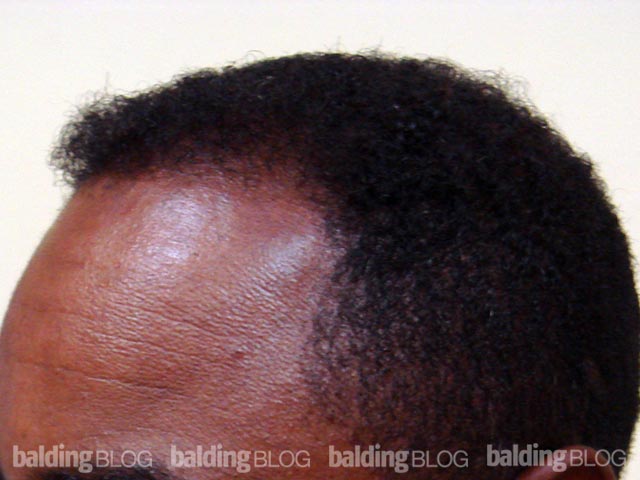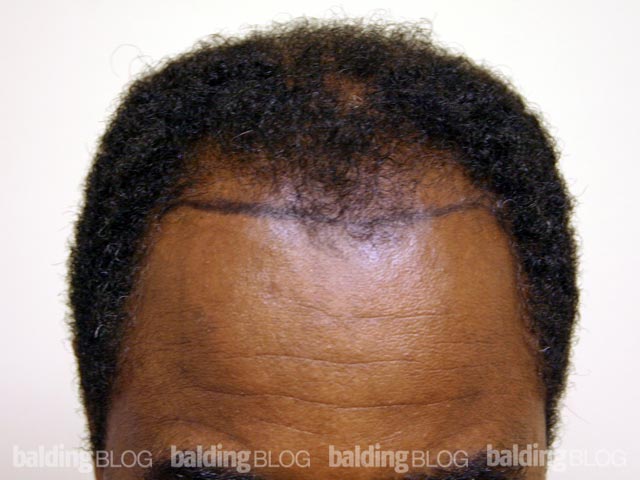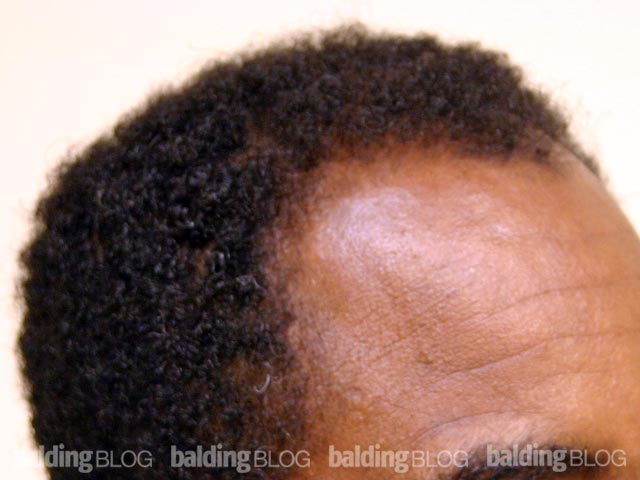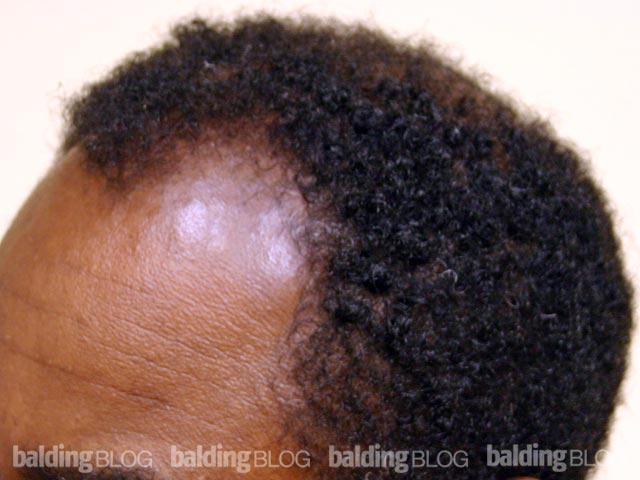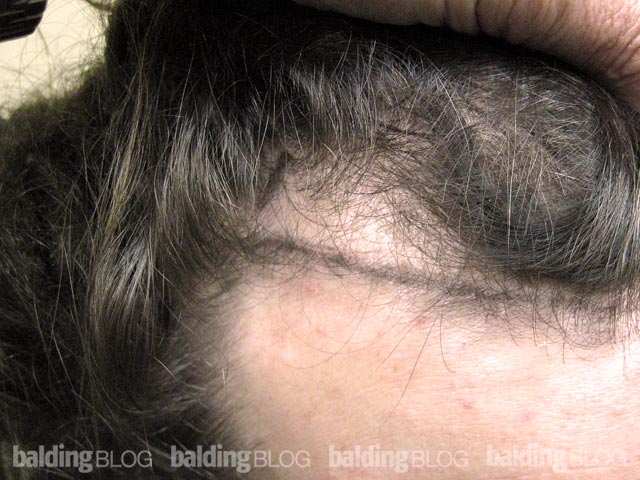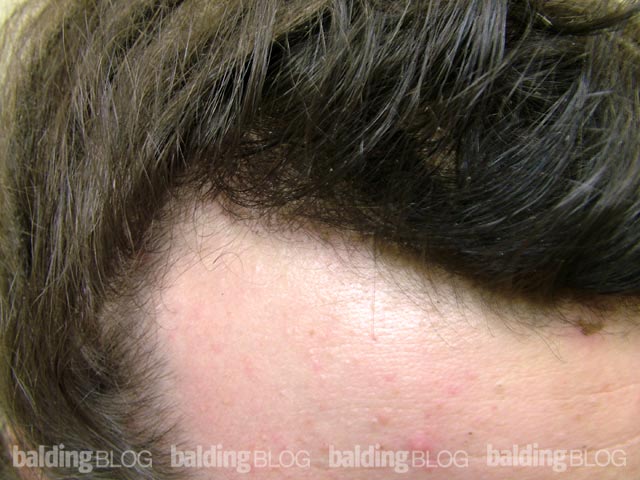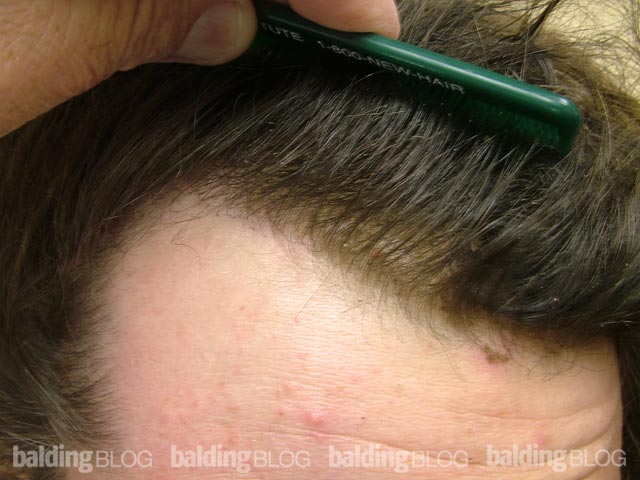doctor, can you please post a 1 year post op picture of the donor site of a patient whose undergone FOX/FUE ? how much density is left in the area i have seen the pictures of immediately after the surgery but it would be nice to see how much of hair actually fills up the donor site after such a procedure is performed! thanks and keep up the good work!
Below, please see the close-up photo of a patient who had 1108 FUE grafts done slightly over a year ago. There is a variability of scarring in any patient, some people just heal better than others. This particular patient had a good density to start with, so the missing follicular units are less evident than one might see in a person with a lower density. Also, the hypopigmentation (white spots from punctate scar formation) which is seen in some patients is not present in this patient. I hope that this helps.
Update: I added some red arrows to just a few of the spots where grafts were extracted. Can you find the other spots? There are easily another 100 places where the follicular units were removed in this field of view.
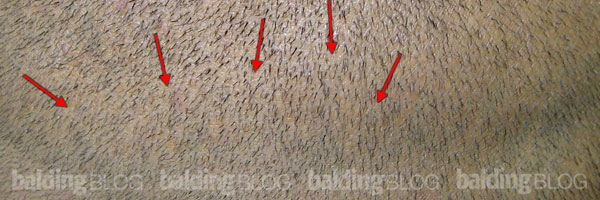
For more info, please see:
- Follicular Unit Extraction: Minimally Invasive Surgery for Hair Transplantation
- Follicular Unit Extraction: The FOX Procedure
![]()
![]()



